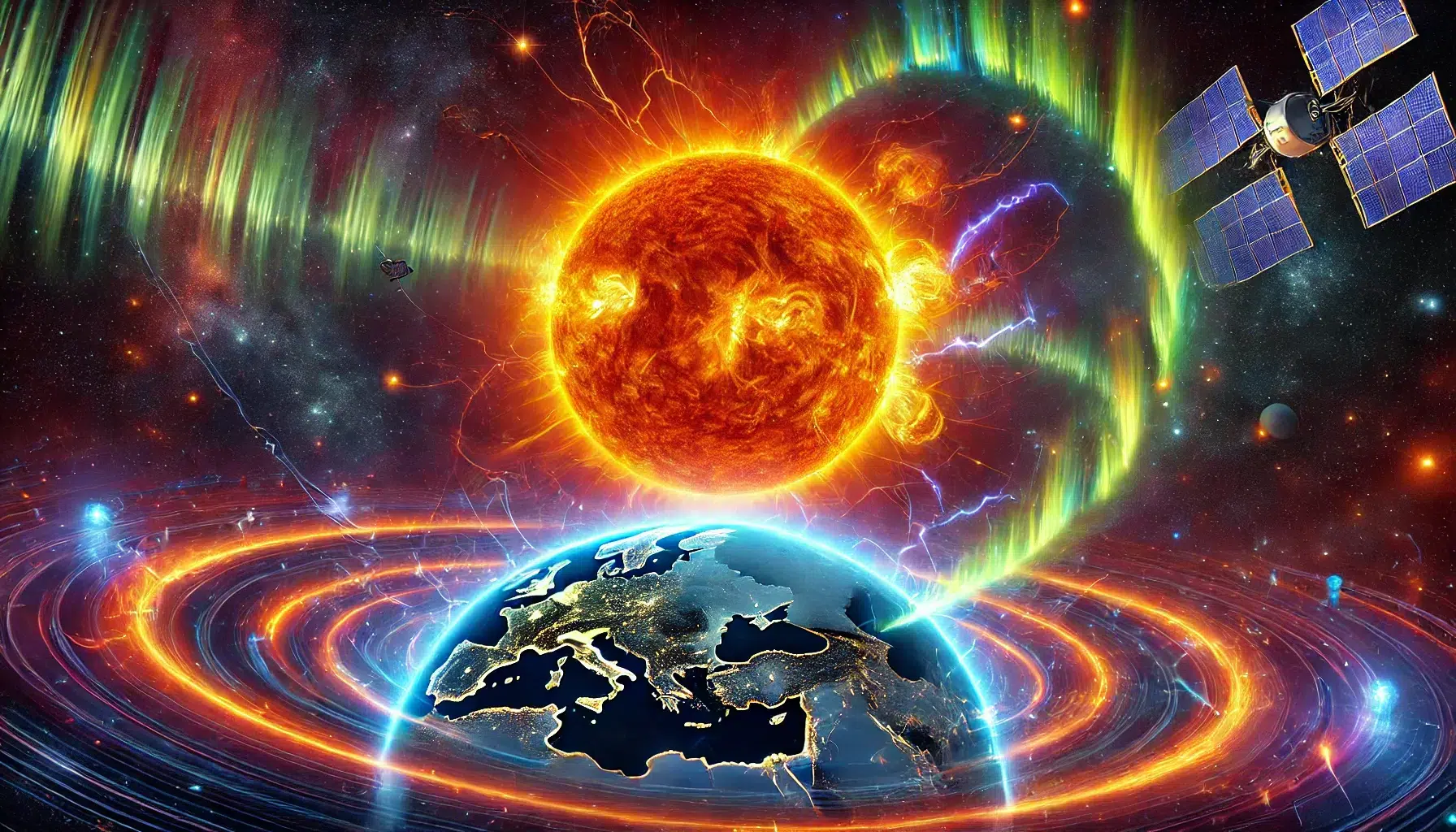
An extreme solar flare M7.6 was detected on januar 4, 2025 by satellite 18. A solar flare of this caliber can produce powerful auroras if it has sent particles toward Earth.
The solar flare started with an intensity of class C2.7 at januar 4, 2025, 04:58 and reached its maximum (M7.6) at januar 4, 2025, 05:18. It concluded at januar 4, 2025, 05:27 with class M3.5. It is estimated that there is an 80% chance that the eruption will affect us here on Earth within the next 48 hours. Stay tuned to the three-day forecast (nordlysvarsel.com) the day after the solar flare was detected to see if the solar wind is expected to hit Earth.
**M-class** is a strong class of solar eruptions and can cause significant disruptions in communication and electrical networks. It can also create auroras at lower latitudes.
**Classification System**
Solar eruptions are primarily classified into five categories: A, B, C, M, and X. Each class represents a tenfold increase in energy compared to the previous class. For example, a B-class flare is ten times stronger than an A-class flare.
**The Different Classes**
– **A-class** is the weakest type of solar eruption. With an energy level below 10⁻⁴ watts per square meter (W/m²), it rarely causes noticeable effects on Earth. Most A-class flares have no practical impact.
– **B-class** is described as a weak solar eruption. The energy level ranges between 10⁻⁴ and 10⁻³ W/m² and can cause minor disruptions in radio communications, especially at high frequencies.
– **C-class** is a moderate solar eruption. It has an energy level between 10⁻³ and 10⁻² W/m² and can cause noticeable disruptions in radio communications and affect navigation systems for short periods.
– **M-class** is a strong solar eruption. These have an energy level between 10⁻² and 10⁻¹ W/m² and can lead to significant disruptions in radio communications, affect satellites, and potentially cause minor power outages on Earth.
– **X-class** falls into the category of extremely strong solar eruptions with an energy level above 10⁻¹ W/m². These can cause large geomagnetic storms, severe disruptions in radio communications, damage to satellites, and extensive power outages on Earth. X-class flares are the most energetic and can have long-lasting effects.
**Why Is This Important?**
Understanding the classes of solar eruptions helps scientists and engineers prepare for potential impacts of solar activity. For example, higher-class flares may require satellites to activate protective protocols or power grids to be closely monitored to prevent or manage outages. For those of us interested in auroras, **M-class** is excellent!
**In Summary**
Solar eruptions are classified into categories from A, B, C, M, and X, ranging from weak to extremely strong. Each class is ten times stronger than the previous one. The eruptions can cause anything from minimal to significant technological disruptions on and around Earth.
It’s important to remember that solar eruptions are a natural part of the Sun’s activity, and by monitoring them closely, we can better protect our technological systems and infrastructure from potential negative effects.
**Source NOAA SWPC** [https://www.swpc.noaa.gov/](https://www.swpc.noaa.gov/)



